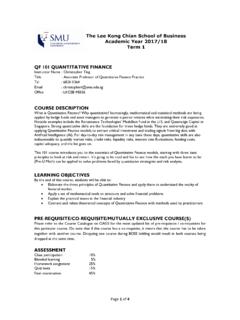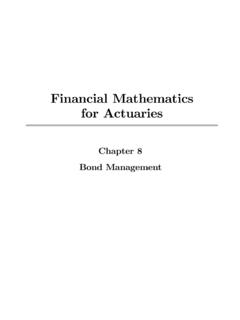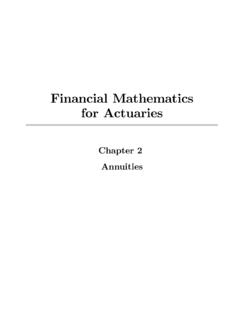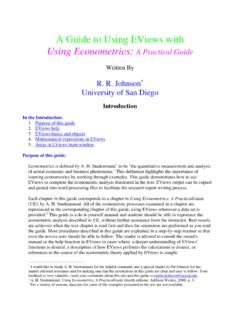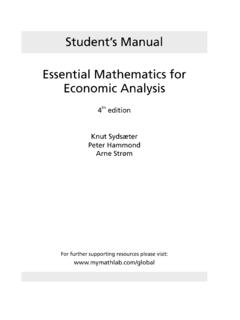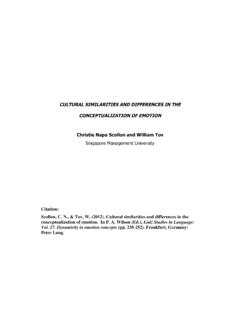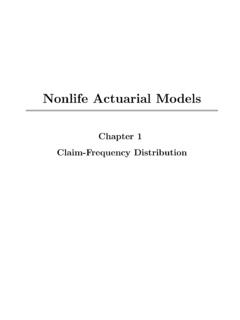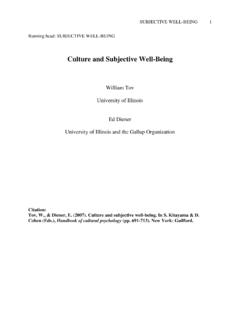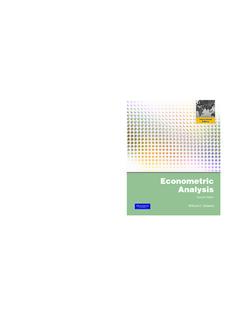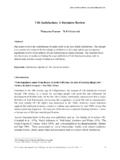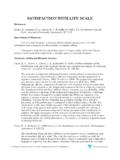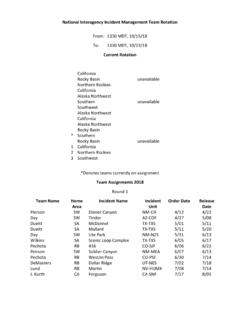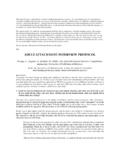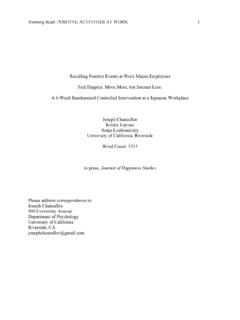Transcription of New Measures of Well-Being - mysmu.edu
1 New Measures of well -BeingEd Diener, Derrick Wirtz, Robert Biswas-Diener, William Tov,Chu Kim-Prieto, Dong-won Choi, and Shigehiro OishiAbstractWe present new Measures of Well-Being to assess the following concepts:1. Psychological Well-Being (PWB); 2. Positive Feelings, Negative Feelings, andthe balance between the two (SPANE-P, N, B); and 3. Positive Thinking. The PWBscale is a short 8-item summary survey of the person s self-perceived functioningin important areas such as relationships, self-esteem, purpose and meaning, andoptimism.
2 The scale is substantially correlated with other psychological well -beingscales, but is briefer. The scale provides a single overall psychological well -beingscore and does not yield scores for various components of Well-Being . The Scale ofPositive and Negative Experience (SPANE) yields a score for positive experienceand feelings (6 items), a score for negative experience and feelings (6 items), andthe two can be combined to create an experience balance score. This 12-item briefscale has a number of desirable features compared to earlier Measures of positiveand negative feelings.
3 In particular, the scale assesses with a few items a broad rangeof negative and positive experiences and feelings, not just those of a certain type,and is based on the frequency of feelings during the past month. A scale to measurePositive Thinking is also presented. Basic psychometric statistics are presented forthe scales based on 573 college students at five Measures of well -BeingWhen examining the standard scales for assessing Well-Being , we were impressedwith the need for measurement scales in several domains positive and negativefeelings, positive thinking, and a brief scale of psychological Well-Being (PWB).
4 E. Diener (B)Department of Psychology, University of Illinois, Urbana-Champaign, Champaign, IL 61820, USAe-mail: scale in this article entitled Psychological Well-Being has since been renamed as the Flourish-ing Scale. Further psychometrics and other data concerning the scale can be found in the article:Diener, E., Wirtz, D., Tov, W., Kim-Prieto, C., Choi, D., Oishi, S., & Biswas-Diener, R. (2009).New Measures of Well-Being : Flourishing and Positive and Negative Diener (ed.),Assessing Well-Being : The Collected Works of Ed Diener,Social Indicators Research Series 39, DOI ,C Springer Science+Business Media 2009247248E.
5 Diener et concepts are related to one another and to life satisfaction, although thetypes of Well-Being are separable (Lucas, Diener, & Suh, 1996; Ryff, 1989) andmust, therefore, be assessed separately. Although scales exist to measure severalof these constructs, the instruments have limitations that make additional measuresdesirable. We present a short measure of psychological Well-Being (PWB) designedto complement the longer scales that are available and a measure of negative andpositive feelings that is designed to better assess ongoing feelings of Well-Being .
6 Aninitial scale to assess positive thinking contains both positive and negative items. Wepresent the psychometric properties of the scales, such as reliabilities and convergentcorrelations with other relevant scales in this chapter are similar to Measures that were first presented inDiener and Biswas-Diener sHappiness: Unlocking the Mysteries of PsychologicalWealth(2008). Several items were altered or dropped, and we report here psycho-metric analyses that examined features of the revised scales such as internal andtemporal reliability, factor structure, discriminant validity of the scales from oneanother, and convergent validity with other similar scales.
7 The Measures in thischapter, and their shortened names, are:Positive Experience (SPANE-P)Negative Experience (SPANE-N)The Balance of Positive and Negative Experience (SPANE-B)Positive Thinking (PTS)Psychological Well-Being (PWB)Why New Scales?Positive and Negative FeelingsScales exist to assess pleasant and unpleasant emotions, and probably the mostwidely used is Watson, Clark, and Tellegen s (1988) Positive and Negative AffectSchedule, called the PANAS. There are several limitations of this measure thatmotivated us to develop an alternative scale to assess pleasant versus unpleasantfeelings.
8 The PANAS was designed to measure a specific conception of emotionalwell-being and ill-being, and thus assesses some states that are usually not consid-ered to be feelings. In addition, the scale fails to measure a number of importantpositive and negative feelings that are considered to be important to Well-Being . Forexample, the Positive Affect items of the PANAS include strong, alert, active, and determined, which many would not consider to be feelings. One can feel active and alert if one is scared, and strong when one does not feel emotional.
9 Determined can be seen as a motivational state, but is not necessarily a pleasantor desirable one in all instances. For example, respondents might be determined because they are angry and vengeful. In addition, some feelings on the PANAS,such as inspired, are rare and very specific. Thus, the scale does not with certaintyreflect feelings that will enhance Measures of well -Being249 The Negative Affect items include many adjectives that are more widely agreedto be emotional experiences, but some feelings are notable by their absence.
10 Forexample, the scale does not include sad or depressed, which are core nega-tive feelings. Indeed, the depression facet of neuroticism predicts life satisfactionbetter than all facets of neuroticism ( , anxiety, anger, vulnerability) combined(Schimmack, Oishi, Furr, & Funder, 2004), suggesting the centrality of sad and depressed in understanding people s Well-Being . Furthermore, some feelings arerepresented by a number of similar adjectives, such as jittery, nervous, scared, and afraid.
